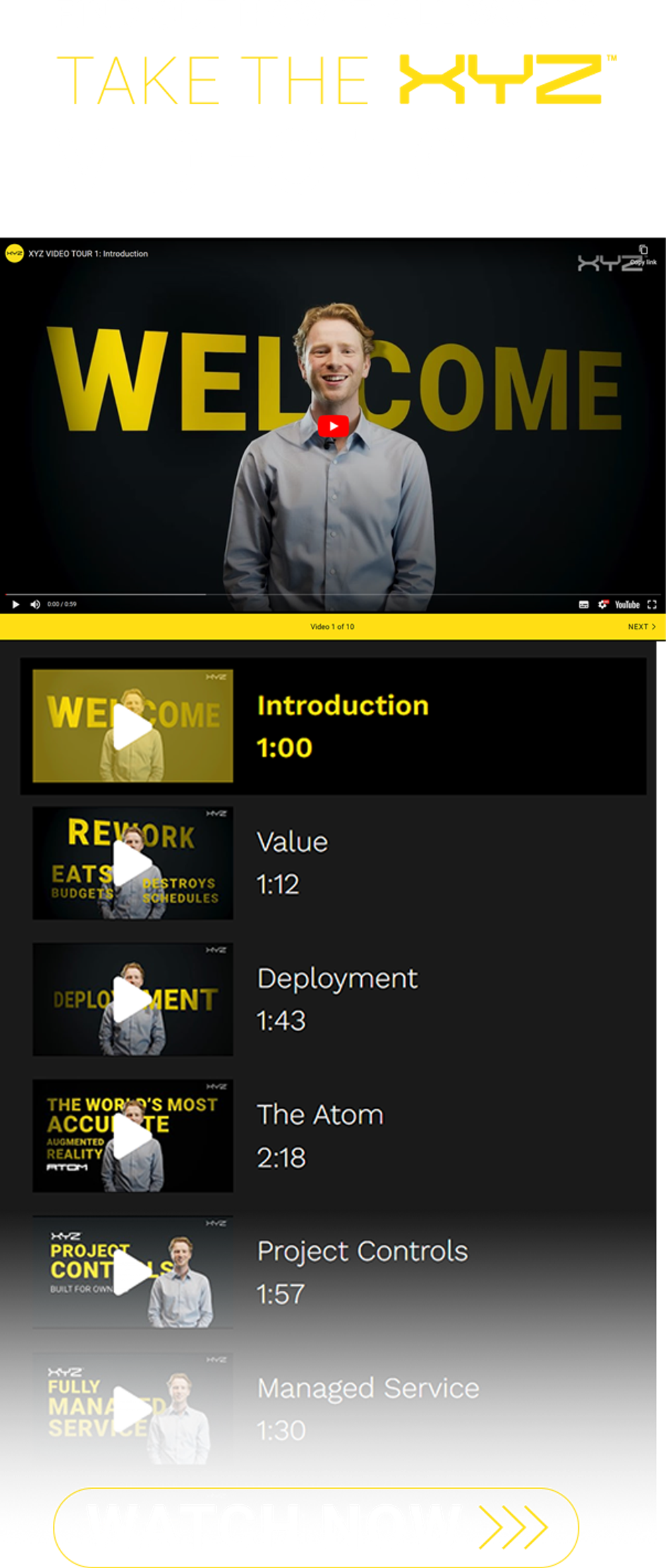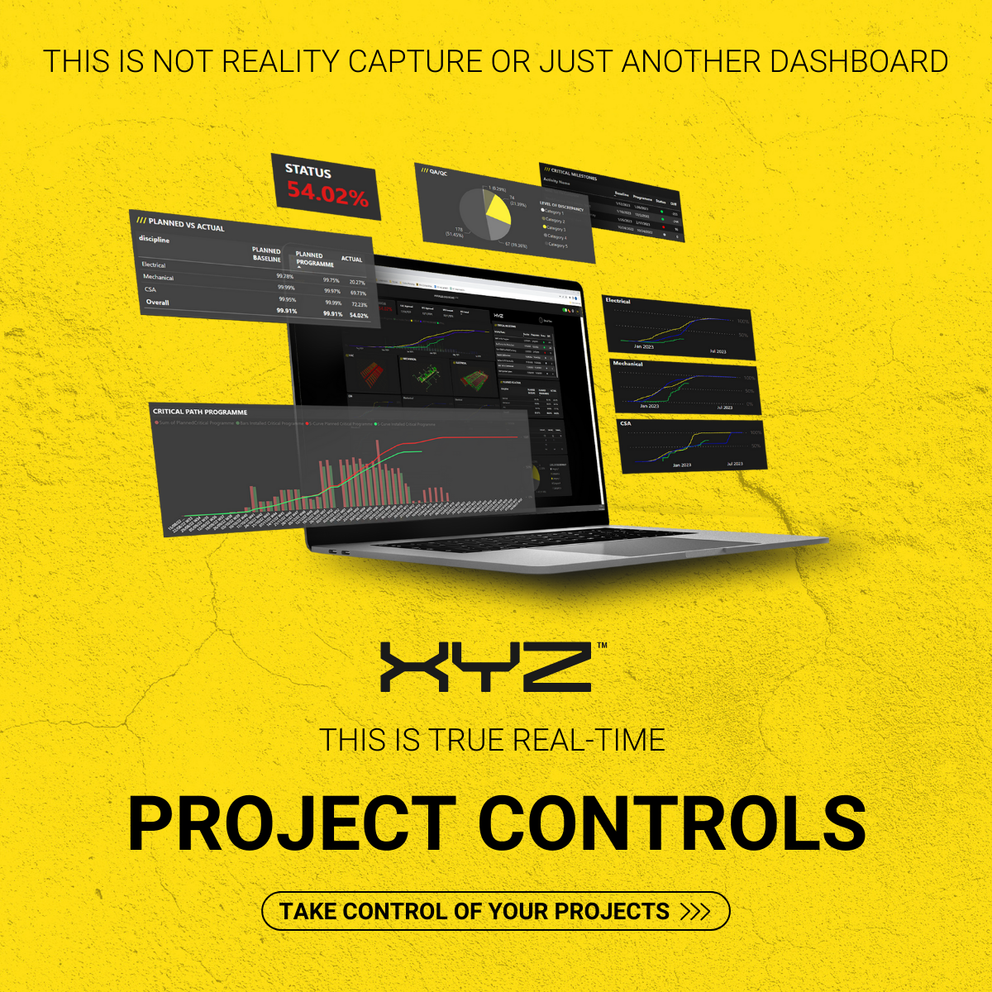-
Services
Services
Find out how we work with our clients and deliver value to construction projects from day one
-
Solutions
Solutions
Discover how all our solutions sync together to deliver construction's most powerful BIM platform to date
-
Built for
Built for
-
Industry
Industry
Understand how we support construction's biggest sectors, and hear from our clients who have experienced the power of XYZ
-
Resources
Resources
Get stuck into all our latest thought leadership, news, reports and industry leading content
-
Company
Company
Dive into what makes XYZ tick, unearth why construction is in our DNA and why we are world leaders in AR solutions

Insights
Intelligent Infrastructure Planning with AR-Enhanced BIM

01 December 2023
We're now at a point in technological advancements where most technologies don't work alone. Instead, developers have ensured that devices and software can work synergistically with others.
The same applies to augmented reality (AR) and building information modeling (BIM).
As our population grows and cities expand, it's becoming more and more imperative to shift toward intelligent infrastructure and smarter construction. Besides space constraints, in today's landscape, the construction industry also has to account for building codes and sustainability requirements.
Enter AR-Enhanced BIM.
The combination of these two cutting-edge technologies is a game-changer in the construction industry. We can merge BIM and AR to create digital models of real-life buildings and monitor them in real-time via smart devices. Let's look at this duo in more detail below.
What Is Intelligent Infrastructure Planning?
Intelligent infrastructure planning means using technology, data, and analytics to optimize the design and construction of infrastructure projects. In simpler terms, it's a smarter way of planning and building things like bridges, roads, buildings, and other structures that compose our modern world.
In the wake of modern living and the fight against climate change, intelligent infrastructure planning has never been more critical.
Nowadays, companies have become more vigilant about the use of natural resources, such as water and energy. Intelligent infrastructure planning facilitates this shift by optimizing resource allocation and reducing waste.
Secondly, smart infrastructure planning enhances resilience. After all, we want public infrastructure to last. This type of planning accounts for risks and uncertainties, ranging from external factors to natural disasters. It then helps create designs that withstand disruptions and ensure service continuity.
Smart infrastructure planning is also more cost-efficient in the short and long-term. Planners use data analytics to identify cost-effective, yet sustainable solutions and building materials. Building for the future ultimately reduces the costs of the original project and minimizes the costs for future projects or repairs.
That ultimately reduces the costs private or government stakeholders would otherwise have to spend on rebuilding and repairs.
How Does AR-Enhanced BIM Facilitate Intelligent Infrastructure Planning?
Most construction project managers are likely already familiar with the benefits of BIM, including accurate cost estimation, better communication, risk mitigation, or higher productivity. However, many are reluctant to bring AR into the equation since it’s so new.
We’ll give you a few reasons to jump on the AR-enhanced BIM bandwagon:
Better Visualization and Design Review
If you already use BIM, you’ll know that it shows you the physical and functional characteristics of your design. But what if you want to view your project from the job site in real-time? What about linking your project schedule to the individual components of your 3D design model? That's where AR comes in.
Technology like the Atom™ headset lets you see 3D models of your projects/designs in the real world. The immersive experience allows you to assign tasks and manage risks in real-time.
This way, all teams can collaborate to minimize risks and identify design issues before they become problems. With less time onsite and fewer rebuilds, we’re contributing to a healthier, safer planet.
Evaluation of Onsite Contextual Information
Visualization makes the design process easier, especially when designing complex buildings and facilities that require incredible accuracy.
Let's say you're building a hospital or a data center. In both cases, you’ll have to determine where the equipment and machinery will go and how it will fit.
BIM can give you a 3D model of the room where the equipment would go. But with AR like the Atom, you can see each room/component to scale and catch errors to the millimeter. This way, you can be confident that all your dimensions are correct before building it.
Real-Time Collaboration
BIM is an excellent tool for construction teams collaborating with several stakeholders. It can help keep all stakeholders to be together on the same page without them having to be in the same room.
For example, engineers or architects don't have to frequent the construction site. Instead, they can review and evaluate their designs from their offices. With the added power of AR like XYZ’s headset, onsite teams can collaborate and identify issues from the job site.
Instead of waiting days for data delivery, it becomes a collaborative platform for all stakeholders to work and visualize together in real-time.
AR tools can help you catch issues and clashes that may not be visible in the BIM model, such as interference between systems or inadequate space for equipment. That means fewer changes and less rework.
Data Integration
BIM data can be quite extensive. Managing and updating this data in a timely manner is often a pain point for many project managers.
At XYZ we designed our AR tool to be the ultimate solution. Our project controls solution allows teams to overlay their BIM models with project schedule information so managers can see what needs to be installed, when it needs to be installed and by who.
While viewing BIM through the AR headset, our project controls solution lets you tag detailed data information related to the installation schedule for each component and update it as the project progresses.
With real-time timeline information and accurate progress data, managers can get a better idea of the progress and communicate it with stakeholders. BIM on its own is great, but with an AR like our solution, you can overlay more information on top of your design for a more comprehensive and dynamic view of your projects.
Quicker access to progress data means stakeholders won’t have to wait days or even weeks for outdated progress updates. This means faster building and better builds the first time.
Leverage AR-Enhanced BIM for Your Construction Team
The key to using AR and BIM in tandem is to choose a provider that offers and specializes in both technologies. That’s where we come in.
Our tools and integrations make incorporating AR into your process simple. Don’t know how to use it? No worries – our team has onsite field engineers to help you deploy our AR tools and project controls on your job site and get your projects done on time.
Rework is one of the biggest issues in the construction industry today. It leads to delays, budget overruns, and fines, among other things. But with a proactive approach to building, it's avoidable. Bridge the gap between your onsite and office teams and streamline your construction process from ideation to delivery.
Improve your construction management and overall processes with the power of augmented reality. Book a demo to see how you can use the duo to make your infrastructure construction processes more efficient, safe, and cost-effective.







